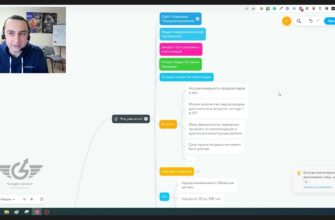The Google AdWords Display Network is connected to an incredibly wide range of sites that are ready to display advertising from the customer.
These platforms have different themes and traffic, so targeting in the Google Ads Display Network will be a good basis for conducting a competent advertising campaign and increasing the number of visits and site views.
Targeting will allow you to weed out non-target users and attract more potential buyers. You can also place banners on the sites to increase brand awareness.
How many calls and sales will I get by ordering contextual advertising from you?
I need to calculate the conversion of my website Describe
the task
in the application
Calculate potential ad revenue Google
contextual advertising calculator
Display Network targeting types
Google Ads is developing, improving and changing advertising tools every year. If earlier there were only a couple of options for setting up targeted advertising, then at the moment there are already 18 of them. The main driver for the development of ad targeting in the Display Network has become an increase in the number of users of Internet resources. Successful selection of the audience will be the basis for a successful advertising strategy.

Most advertisers use only about 4-5 types of display targeting, losing sight of the rest. Although it often happens that in your case, a less common format that your competitor does not use may work. Therefore, the best solution would be to test all possible settings and choose the optimal combination that will cover your target audience as much as possible.
AdWords allows you to combine multiple targeting options for a specific group of posts. You need to understand that this narrows the size of the target audience, because it must fit all the specified parameters at the same time.
Keyword targeting of Display Network ads
The most understandable basic type of targeting in the Display Network has become keyword sampling. To set up, keywords are used for one group of publications, according to which pages for advertising will be selected. The accuracy of search sites for demonstration is quite low. It is difficult for the system to select pages that will combine all the given keys, so you need to be careful about the choice of words and phrases.
Since May 2019, this type of targeting has been automatically changed to Custom Intent or Intent Audiences, including in already created advertising campaigns.
Placement targeting method
This method of targeting in the Google Display Network allows you to independently select platforms, mobile applications and video channels for placing different types of advertisements. It allows you to highlight specific web pages and portals for displaying publications. Having chosen the necessary topic, AdWords will open a list of sites, and the customer will be able to mark the most relevant resources from his point of view.
Attention! By setting up ads by placement, you can set individual bids for individual online resources, if they are predicted to show greater efficiency.
Google display targeting by topic
This type of advertising campaign allows you to reach an audience that has never searched for relevant keywords, but is potentially interested in similar products and services. Allows you to select sites that fit the theme specified by the customer.
When setting up advertising notifications, it is better to select a wide group of topics, and later, after studying the statistics, turn off unprofitable points of contact with the target audience and work out placements.
Attention! Such targeting is possible only in the Display Network. For an accurate and maximum effective advertising campaign, it is better to combine the selection by topic and placement, as well as set the exact coverage in the settings.
This Display Network ad targeting format provides more options for displaying ads within one large site covering a specific topic. Works best with thematic forums, blogs, information resources.
Similar Audiences
Ad setting based on remarketing lists. The customer creates an audience based on visits to his site. These can be people who have purchased a specific product or viewed specific positions and pages. Then, over the course of several days, an analysis and selection of an audience similar in parameters is carried out. The system automatically selects visitors who are as similar as possible to the people presented in the remarketing lists.
The lists are updated automatically. If the user is on the remarketing list, they won’t be in the newly created audience. As a result, the client’s reach increases, the scope of visits expands, and a common client base is developed.
How many calls and sales will I get by ordering contextual advertising from you?
I need to calculate the conversion of my website Describe
the task
in the application
Calculate potential ad revenue Google
contextual advertising calculator
At least 100 visits by different visitors in the last thirty days are allowed in the initial remarketing list to implement Lookalike Audiences. Customization is possible in the Display Network, search results, YouTube, Google Mail and mobile applications.
Remarketing Objects
Remarketing is aimed at Internet users who have already visited the target site, but have not yet placed an order. To activate this type of targeting, the advertiser’s site is assigned an individual code. The latter is needed to generate lists of visits.
By enabling remarketing, you can distribute impressions to the following user groups:
- Everyone who visited the Internet resource;
- Those who added the product to the cart but did not buy it;
- Visitors to a specific page;
- Everyone who placed an order;
- Those who have not completed the application;
- A certain number of resource pages have been visited.
There are two types of remarketing – classic and dynamic. The first helps to display new items, promotions, discounts. Most often used by online stores, travel agencies and sites for the sale and rental of real estate.
Dynamic remarketing allows you to showcase products and services that the user has previously viewed but has not yet purchased. In this case, while watching a video on YouTube or surfing on sites from the Google partner network, advertisements about this product will be broadcast to him.
Important! The size of the lists plays a key role: for search engines, it should consist of at least a thousand positions, for a display network – from a hundred. Remarketing list data is retained for 540 days.
Setting ads based on interests

A non-standard way of setting, based on an assessment of the interests of Internet users. Google analyzes the search queries and actions of people when visiting various websites, and as a result creates specific interest categories. Such targeting will be effective for expanding the audience and increasing coverage.
This setting is available in Display Networks, video hosting sites and search networks as a screening of visitor reactions.
Device targeting type
Helps you run promotions for certain mobile devices. For example, you can hold a presentation of a new version of a smartphone for owners of outdated models or advertise accessories for a certain brand of equipment. Most often, this type of targeting in the Display Network is used by owners of online stores of equipment, covers and films for phones and other similar sites. It is available for use within the Display Network and video hosting.
The target audience for an advertising campaign can be divided into:
- Owners of specific mobile devices;
- Owners of equipment based on selected OS (Apple, Android, Windows, etc.);
- Wireless network users.
Important! It is better not to use this type of targeting in combination with others, as you can significantly reduce the reach.
By demographics
An easy and reliable way to narrow down audience sizes. Most often used in combination with other types of targeting.
Audience selection based on demographic criteria can be carried out according to the following criteria:
- Age;
- Gender;
- Marital status;
- Education received;
- Having children;
- Ownership of real estate, vehicles.
Fits best with Display Network ads and search campaigns.
Radius targeting
Allows you to select a specific area around the points of sale of the product, and distribute ad impressions only to the specified perimeter. This type of ad targeting in AdWords analyzes the location and interests of a potential buyer, and shows him options for outlets to visit near him.
With the help of segmentation by radius, you can significantly increase the flow of potential buyers and sales in offline stores, beauty salons, hairdressers, repair shops, etc.
Priority platforms for demonstration will be video channels, display networks and advertising in search.

















